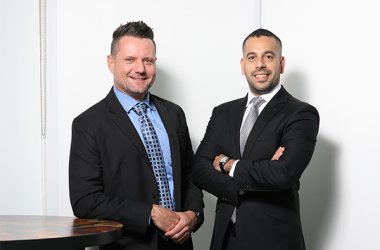
The price of DRAM computer memory chips is on the rise as global PC makers gear up for back-to-school and holiday sales later this year, which could be stronger than expected due to the arrival of Microsoft’s Windows 7 operating system.
The launch of Windows 7 on Oct. 22 has stirred up excitement for a few reasons. The new OS has won good reviews from people who have tested the beta editions, sparking hope Windows 7 could finally draw people away from the popular Windows XP, which has reigned for over eight years. Windows 7 also paves the way for some neat new features on PCs, which could also boost sales.
Several hot products that will benefit from touchscreen technologies in Windows 7 and could spur increased purchases, including laptop computers, netbooks and All-in-One PCs, which are essentially monitors with computers on board, according to DRAMeXchange Technology, which operates an online clearinghouse for memory chips.
CULV laptops, designed with powerful but low voltage microprocessors from Intel, are also a market mover, according to notebook computer makers in Taiwan. The devices are thin, light, inexpensive, and promise long battery life for users.
Laptop computer sales by Taiwanese contract manufacturers surged in June due partly to CULV laptops. Monthly shipments at Quanta Computer, the world’s largest contract laptop maker, surged to 3.3 million units in June from 2.3 million in May, the company reported. Compal Electronics, the second biggest contract notebook computer maker, reported June shipments rose to 2.7 million units from 2.5 million in May.
Market researcher IDC confirmed the rosier PC market when it released quarterly market figures last week. Consumers bought more PCs, particularly portable computers, than it expected in the second quarter, causing PC shipments to fall 3.1 percent compared to the same quarter last year, instead of the expected 6.3 percent drop.
The better-than-expected demand doesn’t mean the global recession is over nor that PC market growth will resume quickly, but it has caused PC makers to scramble for certain parts, such as small LCD screens and DDR3 (double data rate, third generation) DRAM chips.
DRAM prices started creeping up three weeks ago as manufacturing picked up, and contract prices for chips delivered in the second half of July surged.
Contract prices of 1Gigabit (Gb) DDR3 DRAM chips running at 1066Megahertz (MHz) for the second half of July rose as much as 10 percent, DRAMeXchange reported late last night. Average prices for the chips were US$1.34 each. Prices of the most widely used chips, 1Gb DDR2 at 800MHz, increased as much as 6.6 percent, with the average price at $1.22.
DDR3 chips use as much as 60 percent less power than DDR2 while offering almost twice the bandwidth, according to Samsung Electronics, the world’s largest DRAM maker.
Despite rising demand for the chips, price gains for them should be capped by excess production lines.
The global DRAM downturn, which started over two years ago, caused chip prices to drop so low that most DRAM makers shuttered some production lines and slowed technology upgrades normally meant to increase output. These companies have reported massive losses over the past few years and are strapped for cash to pay back creditors and buy new factory technology. As DRAM prices rise they will increase production to bring in money, tempering DRAM price increases with fresh chip supplies.
Best time to buy is now for PC buyers as prices rise over the next few months





